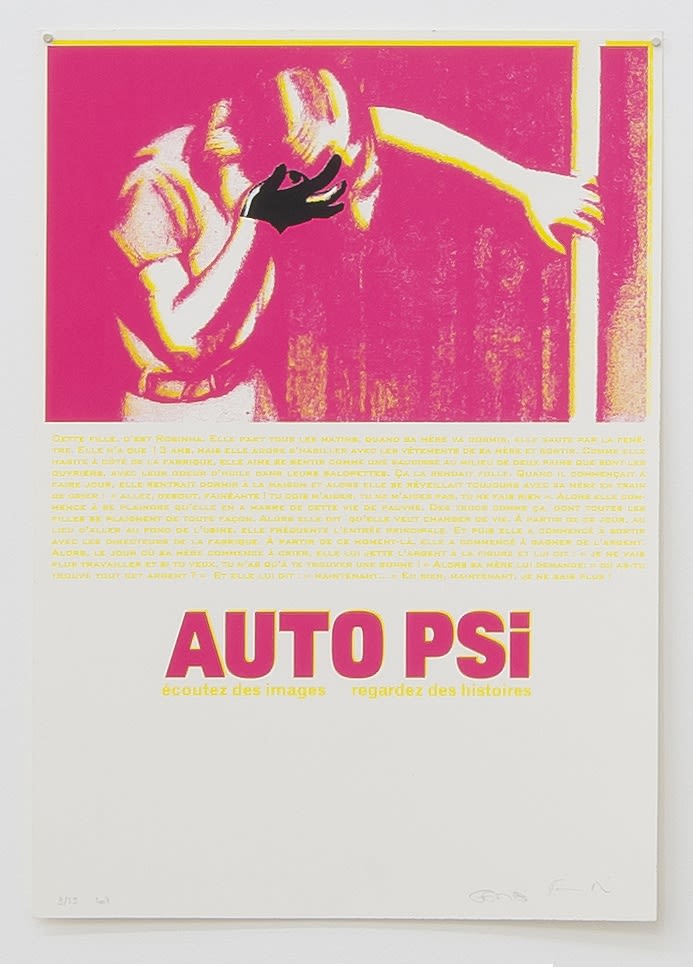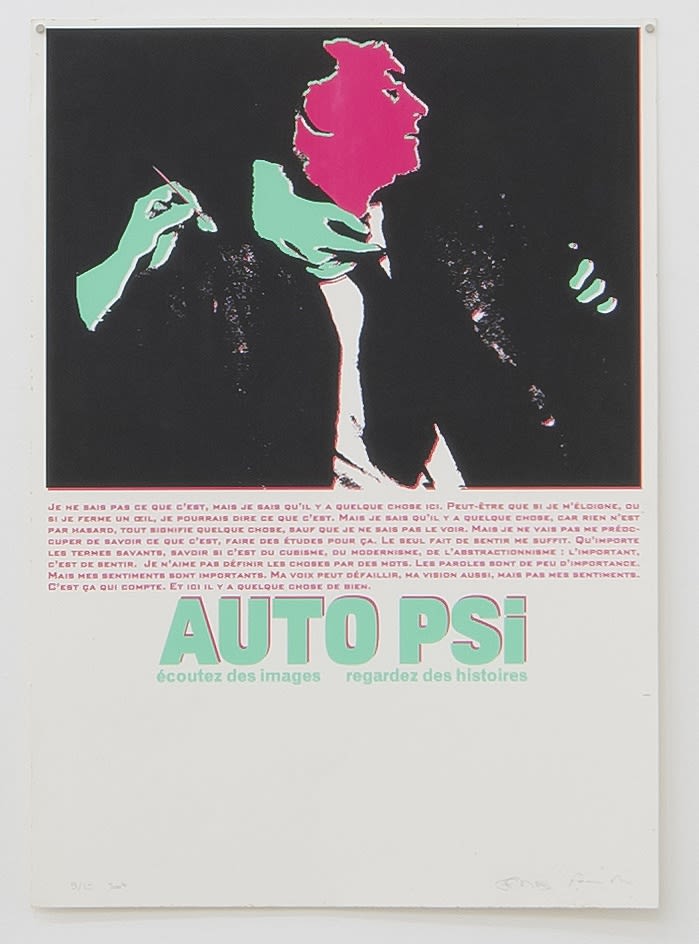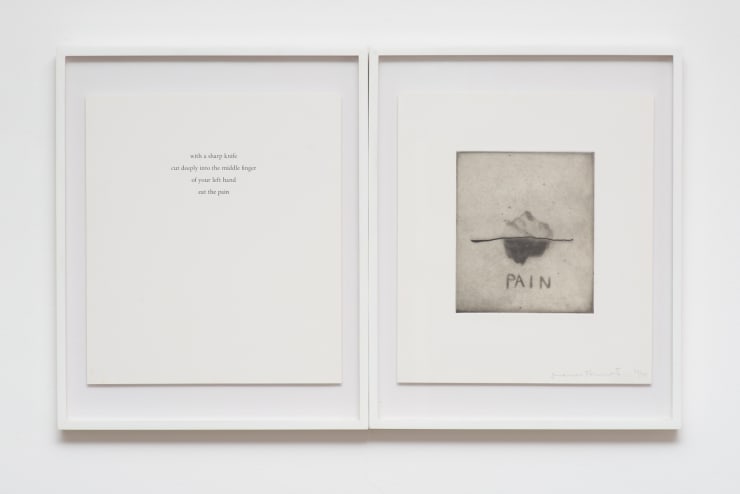-
Art Must Be Beautiful, Artist Must Be Beautiful
-
A Luciana Brito Galeria tem o prazer de anunciar a mostra “Art must be Beautiful, Artist must be Beautiful”, de forma a destacar a presença das artistas mulheres e reforçar a importância de suas pesquisas para o programa da galeria. O título, que além de fazer uma referência a obra homônima de Marina Abramovic, resume em poucas palavras o conceito do projeto, cujo objetivo é justamente de apresentar trabalhos significativos e representativos dentro da potência da investigação artística de cada uma delas: Fabiana de Barros (1957, São Paulo), Liliana Porter (1941, Buenos Aires), Regina Silveira (1939, Porto Alegre), Rochelle Costi (1961, Caxias do Sul), Marina Abramovic (1946, Belgrado, Servia), Paula Garcia (1975, São Paulo). Dentro desse conjunto, a obra de Rochelle Costi, “Coleção da Artista”, ganha um significado especial não apenas por representar um contraponto à obra de Marina Abramovic, mas também por funcionar como catalisador para esse conjunto pensando pela curadoria.
“Art must be Beautiful/Artist must be Beautiful”, 1975-2010, de Marina Abramovic, é uma das suas obras mais emblemáticas. Trata-se do registro da performance onde ela é incisiva na crítica ao circuito da arte através do limite físico do próprio corpo feminino. Em um momento histórico, a artista escova com violência seus próprios cabelos, símbolo estético da feminilidade, até a exaustão, ao mesmo tempo em que repete a frase título da obra. Um trabalho que remete a resistência da mulher no campo muitas vezes austero da arte contemporânea. A obra de Paula Garcia, “Crumbling Body (documentação de performance #2)”, 2015, também fala de resistência. A artista cria situações de embate físicos e psicológicos para associar conceitos relacionados ao corpo a temáticas atuais, apoiando-se em teorias acadêmicas, como a filosofia.
A galeria também apresenta obras das artistas Regina Silveira e Fabiana de Barros. Regina Silveira, uma das artistas mais representativas da história da arte brasileira, apresenta a obra inédita “Corredores para Abutres”, 1982-2020, uma série de desenhos históricos que mostram os possíveis caminhos percorridos pelos pássaros (ou metáforas para outras interpretações mais pejorativas para “abutres”), recentemente gravados a laser sobre placas de ardósia. Já Fabiana de Barros (que desde 1996, forma dupla com Michel Favre - FABMIC), traz uma abordagem multimídia engajada em assuntos de cunho social. As gravuras da série “Auto Psi”, 2007, retratam histórias diversas de pessoas que participaram do projeto homônimo de ação urbana, onde os artistas propunham a troca de uma viagem de táxi por histórias criadas a partir de imagens apresentadas.
A obra de Liliana Porter trabalha a ambiguidade existente entre a realidade e a representação. Sua visão sensível da natureza humana a conduz para um viés mais lúdico, ao passo que também pode ser irônico ou até sádico. Em “Situation with Roller Barrel”, 2008, Liliana Porter utiliza pequenos objetos para criar uma das chamadas “vinhetas teatrais”, ou seja, uma situação que problematiza as mazelas da nossa consciência. Rochelle Costi trabalha a memória afetiva, acionada pelo dispositivo da imagem. Sua pesquisa parte de seu próprio repertório imagético, tornando o colecionismo e a fotografia elementos importantes e complementares. A instalação inédita, “Coleção da Artista”, 1993-2020, é uma síntese poética da investigação da artista. Ao longo de quase quarenta anos, ela reuniu trezentos corações, símbolo ao mesmo tempo paradoxal, seja pelo romantismo muitas vezes piegas das emoções, seja pela força pulsante que oxigena, pulsa e mantém a vida.
Luciana Brito Galeria is pleased to announce the show Art must be Beautiful, Artist must be Beautiful, underscoring the presence of women artists and reinforcing the importance of their research for the gallery’s program. The title is a nod to the homonymous work by Marina Abramovic while tersely summarizing the concept of the project, aimed specifically at presenting significant and representative works by the artists featured in the show: Fabiana de Barros (1957, São Paulo), Liliana Porter (1941, Buenos Aires), Regina Silveira (1939, Porto Alegre), Rochelle Costi (1961, Caxias do Sul), Marina Abramovic (1946, Belgrade, Serbia), and Paula Garcia (1975, São Paulo). Within this set, the work by Rochelle Costi, Coleção da Artista [Artist’s Collection], gains special meaning not only for representing a counterpoint to the work by Marina Abramovic, but also for catalyzing this selection conceived by the curatorship.
Art must be Beautiful/Artist must be Beautiful, 1975–2010, by Marina Abramovic, is one of her most emblematic works. It is recording of a performance where she incisively criticizes the art circuit through the physical limit of the female body itself. At a historic moment, the artist violently brushed her own hair, an aesthetic symbol of femininity, until exhaustion, while repeating the title phrase over and over. This action refers to the resistance of the woman in the often austere field of contemporary art. The work by Paula Garcia, Crumbling Body (documentação de performance #2) [Crumbling Body (documentation of performance #2), 2015, also speaks of resistance. The artist creates situations of physical and psychological clashing to allude to concepts related to the body and to associate them with current thematics, supported by academic theories, such as philosophy.
The gallery is also presenting works by the artists Regina Silveira and Fabiana de Barros. Regina Silveira, an artist highly representative of the history of Brazilian art, is presenting the never-before-shown work “Corredores para Abutres” [Corridors for Vultures], 1982–2020, a series of historic drawings that show the possible paths taken by birds (or, metaphorically, by other more pejorative interpretations of “vultures”) and was recently engraved by laser on slate slabs. For her part, Fabiana de Barros (who since 1996 has formed the artist duo FABMIC together with Michel Favre), is presenting a multimedia approach concerning social issues. The prints of the series Auto Psi, 2007, portray various stories of people who participated in the urban action of the same name, where the artists offered a free a taxi trip in exchange for stories created on the basis of images they showed to the passenger.
The work by Liliana Porter deals with the ambiguity existing between reality and representation. Her sensitive view of human nature leads her along a more playful path, which can, however, also be ironic or even sadistic. In Situation with Roller Barrel, 2008, Liliana Porter uses small objects to create one of her so-called theatrical vignettes, that is, a situation that problematizes the wounds of our consciousness. Rochelle Costi works with emotional memory, through the device of the image. Her research is based on her own repertoire of imagery, using the practices of collecting and photography as important and complementary elements. The installation Coleção da Artista, 1993–2020, being shown here for the first time, is a poetic summary of the artist’s investigation. Throughout nearly 40 years, she has gathered 300 hearts, a paradoxical symbol that can refer to either sentimental romanticism or an oxygenating pulse of life.
-

Fabiana de Barros & Michel Favre
"Auto Psi - écoutez des images, regardez des histoires", 2007
serigrafia | silkscreen
59,2 x 42 cm | 23.42 x 16.53 in
ed 10/19
-
-

"Untitled with Black and White Paint", 2008
Técnica mista e assemblage sobre tela | Mixed media and assemblage on canvas
116,8 x 182 cm | 45.98 x 71.65 in
-
-

"Art Must Be Beautiful / Artist Must Be Beautiful", 1975 / 2010
20 impressões em gelatina de prata | 20 silver gelatin prints
64 x 75 cm cada (each) | 106.29 x 153.54 in (25.19 x 29.52 in each)
Ed 2/3
-
-

"Crumbling Body" (Documentação de performance #1), 2015
impressão a jato de tinta sobre papel | inkjet print on paper
160 x 200 cm | 62.99 x 78.74 in
Ed 1/3
-
-

"Corredores para Abutres", 1982 / 2020
gravação sobre ardósia | engraving on clay slate
40 x 500 cm aprox. | 40 x 40 cm cada (11 peças)
15.74 x 196.85 in approx. | 15.74 x 15.74 in each (11 pieces)
-

ROCHELLE COSTI
"Coleção da Artista", 1993 / 2020
cerca de 200 objetos representando o coração, números adesivados | aprox. 200 objects representing the heart, numbered
260 x 600 cm aprox. | 102.36 x 236.22 in approx.
-
-

"Coleção da Artista", 1993 / 2016
impressão jato de tinta sobre papel de algodão | inkjet print on cotton paper
120 x 124 cm | 47.24 x 48.81 in
Ed 2/3
-
-
Para proteger os nossos visitantes e funcionários e para prevenir a disseminação do COVID-19, é obrigatória a visita com hora marcada e o uso de máscara durante toda a permanência no estabelecimento. Visitantes devem manter o distanciamento social apropriado e levar em consideração o horário marcado para a visita.
Horário de funcionamento : Segunda - Sexta, 13h - 18h
info@lucianabritogaleria.com.br | +55 11 3842-0634
To protect our visitors and staff, and mitigate exposure to COVID-19, appointments are mandatory, face coverings are required for entry and must be worn at all times. Visitors must maintain proper social distance and be mindful of the allotted time.
Visiting hours : Monday - Friday, 1 pm - 6 pm
info@lucianabritogaleria.com.br | +55 11 3842-0634















